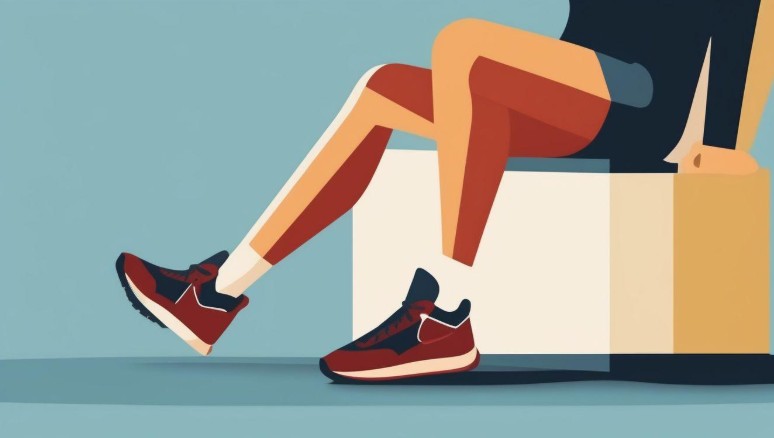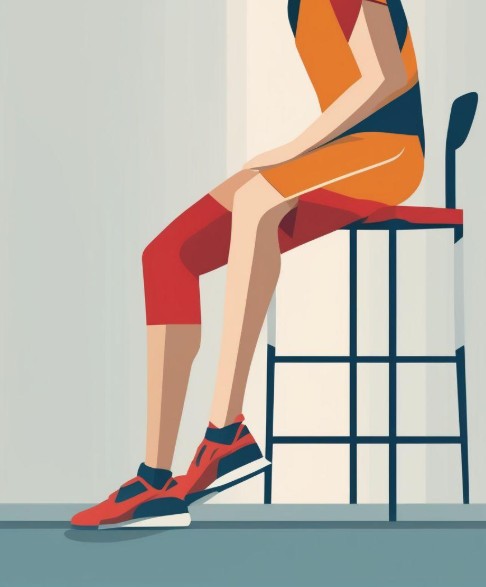Common Knee Injuries in Athletes: 5 Prevention and Recovery Tips
Common Knee Injuries in Athletes: 5 Prevention and Recovery Tips
Athletes know that injuries are just part of the game.
When you push yourself harder, you also take on more strain, and the knees often pay the price. It’s not unusual to hear of professional players sidelined by knee bursitis, a meniscus tear, or ligament damage.
The knee is a tough but complex joint. It carries your entire body weight and allows you to bend, twist, and change direction.
It’s held together by four major ligaments:
- Medial collateral ligament (MCL)
- Anterior cruciate ligament (ACL)
- Lateral collateral ligament (LCL)
- Posterior cruciate ligament (PCL)
Putting too much force on these ligaments, especially during intense physical activity, typically leads to injuries.
The good news is that with the right habits, you can prevent knee injuries from happening. And even if they do occur, you can still recover well. Here are some practical tips to protect yourself from common knee injuries in athletes and heal your knees if they get injured.

1. Build Strength and Stay Conditioned
Sports such as American football, volleyball, European football or soccer, and basketball put players at higher risk of knee problems like ACL tears.
That’s why strength training is essential for athletes. (1)
Strong muscles act as shock absorbers for your knees. They take on part of the load so your ligaments don’t carry it all. So, focus on your quads, hamstrings, glutes, and core. Exercises like squats, lunges, and hamstring curls are great choices to strengthen your knee joints. A strong midsection also reduces knee strain by giving your body more stability.
If your knees are starting to ache, don’t push through it. Pause your exercises in the meantime. Consider seeing a pain management physician for knee ache treatment to prevent further injury. Knee specialists can create a treatment plan that fits your activity level and career goals. They can check how pain impacts your career and daily life and align your goals with your treatment plan.
When recovering from a knee injury, slowly introduce strength and conditioning work.
Start with light, low-resistance movements, and increase intensity only when your joint feels ready. Rushing back too quickly can set you up for another preventable injury.
2. Warm Up and Keep Flexible
Cold muscles and stiff joints are more likely to injure you one day. So, you should never skip a warm-up session. A proper warm-up increases blood flow, loosens muscles, and prepares your body for sudden movements. Try dynamic exercises like leg swings, walking lunges, and high knees before training or competition. These movements mimic the ones you’ll often do while playing sports.
Prioritize your flexibility, too. Tight muscles can pull your knee joint out of its natural alignment. That could increase the risk of common knee injuries in athletes, such as an LCL tear or MCL injury.
Spend time after workouts on static stretching and mobility drills to restore balance and recover faster between sessions.
If you’re coming back from an injury, gentle stretching under the guidance of a physical therapist or sports medicine professional helps you regain motion safely. It’s crucial to retain mobility if you’re healing from a meniscus tear or knee fracture. Stretching should also never be painful. The goal is to restore natural movement, not push your knee past its limit.
3. Use Proper Technique and the Right Gear
Poor technique can impact even the strongest muscles and most flexible joints. Landing from a jump with bent knees and hips spreads out the impact on your knee joints. Meanwhile, twisting on a planted foot or making sudden cuts without control can lead to ligament injury.
- Good shoes that support your feet help stabilize your knees.
- Research shows that people with firm, cushioned footwear with thick soles are ideal if you feel pain in your knees.
- In their study, 58% of people wearing sturdy shoes experienced less knee pain while walking. (2)
Depending on your situation, knee bracing, sports taping, or orthotics can also be a great aid. These tools provide extra stability, especially during recovery from sprains or ligament tears.
4. Rest, Recover, and Pay Attention to Warning Signs
Training without proper rest is one of the fastest ways to develop long-term knee problems and other sports injuries like patellar bursitis. You must give your muscles and joints downtime to repair from constant movement.
(Skipping rest days or pushing through the pain COULD lead to worse issues later.)
Active recovery can keep you in shape without putting too much strain on your knees that lead to sports injuries. Swimming, cycling, and light strength training are great ways to stay active without beating up your joints. Just steer clear of heavy lifting while you’re healing up. And don’t forget to sleep as much as you can, too. Your body repairs tissue much faster during rest.

When injuries do happen, resist the urge to jump right back into your sport. Getting back out there before your knee is completely healed usually just sets you back even further. Stick with your physical therapy and follow all your doctor’s recovery instructions.
They’ll conduct a clinical examination for strength, mobility, and function to officially clear you to play again.
5. Seek Early Treatment and Professional Guidance
One of the best ways to prevent injuries is pretty straightforward: listen to your body. Don’t brush off knee pain that won’t go away or swelling that sticks around. Those little problems you ignore can quickly turn into major injuries that’ll keep you on the sidelines for months.
- A sports doctor or physical therapist can figure out what’s really going on and stop things from getting worse.
- They can design rehabilitation plans, which might include:
- Strength-building exercises
- Mobility training
- Therapies like blood flow restriction to stimulate muscle growth
- Fixing bad movement habits and strengthening your weak spots helps you avoid the same problems that got you injured in the first place.
Getting better from injuries takes patience and sticking with the program.
Many common knee injuries in athletes, like ACL tears or runner’s knee, often happen again if people don’t fully complete their rehab. If you’ve had surgery, especially ACL reconstruction, following through with your entire recovery program can lower your chance of getting hurt again to between 9% and 29%. (3)
Don’t Ignore the Knees!
Most common knee injuries in athletes happen when too much stress is put on the ligaments. But good habits, like properly warming up and cooling down, using the right techniques, and getting enough rest, can protect your knee joints and reduce your risk of getting hurt.
If you’re already dealing with pain or a knee ligament injury… don’t try to tough it out alone.
Get in touch with an orthopedic specialist or sports medicine expert.
They can help protect your knees and, if you need surgical treatment, guide you through a complete recovery so you can get back to the sport you love with knees that are stronger and healthier than before.
References:
- “The Incidence of Sport-Related Anterior Cruciate Ligament Injuries: An Overview of Systematic Reviews Including 51 Meta-Analyses,” Source: https://pmc.ncbi.nlm.nih.gov/articles/PMC12101161/
- “Study finds these shoes are better at keeping knee pain in check,” Source: https://www.health.harvard.edu/pain/study-finds-these-shoes-are-better-at-keeping-knee-pain-in-check
- “Return to Sport Activities and Risk of Reinjury Following Primary Anterior Cruciate Ligament Reconstruction,” Source: https://pmc.ncbi.nlm.nih.gov/articles/PMC9569141/

